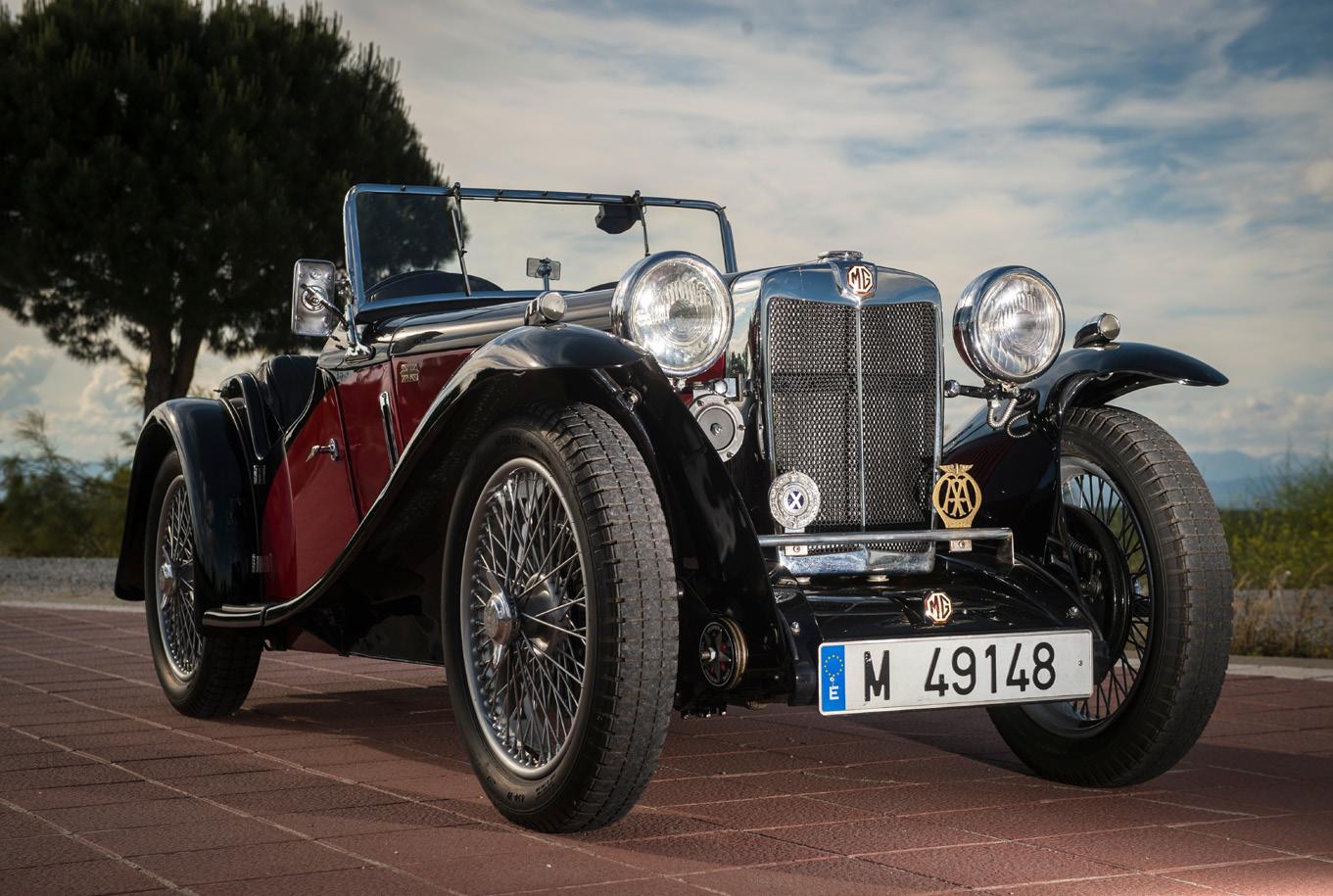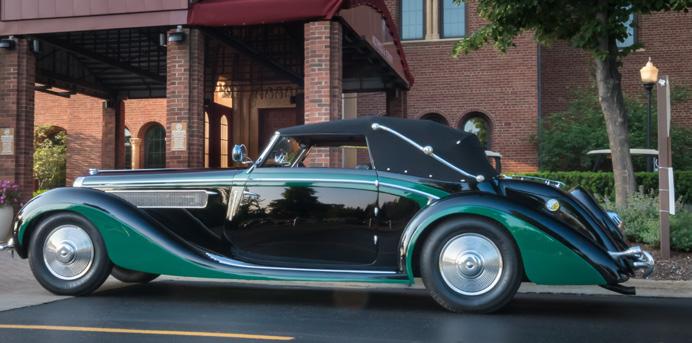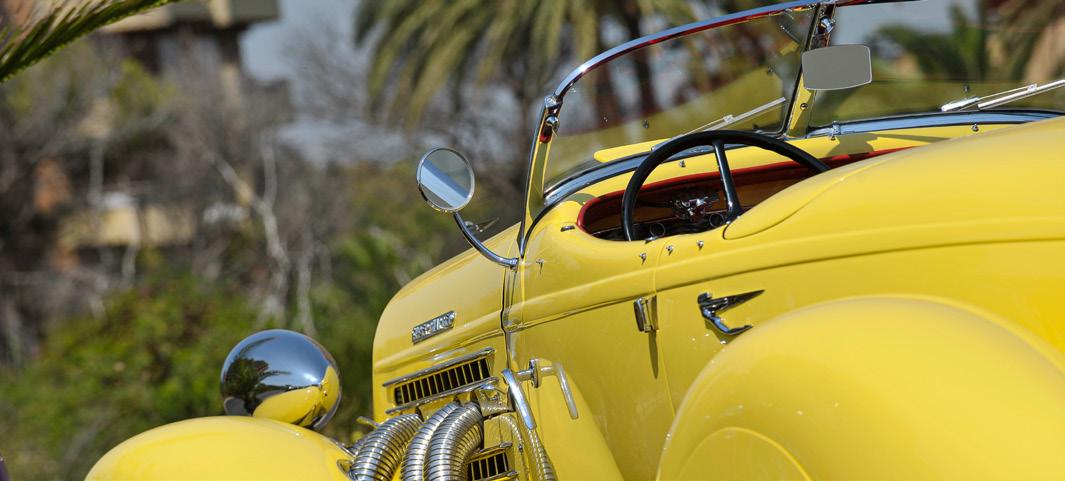
7 minute read
LEGENDARY CAR BRANDS THAT ARE NO MORE
Car lovers have many fantastic makes to choose from whether it is sports performance or luxury they lust after, but spare a thought for the many legendary names that produced art on wheels yet didn’t make it into the modern era – or have they? Some are actually making a comeback.
WORDS MICHEL CRUZ PHOTOGRAPHY SHUTTERSTOCK

The Silver Arrow Auto Union – a legendary racing car
Younger car enthusiasts may not know this, but before and also during the time of today’s desirable car makes – you know, the likes of Porsche, Mercedes, Audi, BMW, Ferrari and McLaren – there were other legendary car brands whose sheer quality, pedigree and beauty have made them into myths of the road. Not unlike stars who died too young, they continued to capture the imagination long after they were lost to us.
GERMAN MYTHS
Germany may dominate the modern car world with luxury brands such as Mercedes, BMW, Porsche and Audi, but these are not the only German makes that have made waves.

Mercedes has also revived a famous name – the Maybach
Except for Mercedes, the other top names of today are relative newcomers, and Audi is in fact the product of the coming together of some top German car manufacturers of the past. In the latter 1930s, the silver arrows of Auto Union dominated the racing world, a taste of the engineering prowess for which Germany has since become world famous.

The Horch was once a serious challenger for Mercedes limousines
Even earlier, Horch limousines were serious competition for Mercedes, and it was only a few years ago that the latter revived the mythical Maybach name, now reserved for its most luxurious and expensive limousines. One of these decadent vehicles will set you back over half a million euros, though in the immediate post-war era the pretty Borgward Isabella was almost just as desirable.

A Borgward Isabella concept sports car that aims to bring back the nostalgic name

The pretty Borgward Isabella was a highly desirable post-war car
Together, manufacturers like this have shown the world what Germany can do in terms of design, craftsmanship and innovative thinking, yet if there is one current make that symbolises the German technical ‘Vorsprung durch Technik’ it has to be Audi – a company whose very roots lie in the performance and power of Auto Union, and the groundbreaking technology and design of NSU, a little-known but avant-garde carmaker of the 1960s and 70s. Their last great model, the NSU Ro80, was an amazing car that was far ahead of its time, and Audi still benefits from the technology it inherited from the NSU engineers.
BRITISH TRADITIONS

The MG TC remains a motoring classic executive car
Think of great British names of motoring and a fine tradition of open-top sports cars and limousines comes to mind. The older names include those of Armstrong Siddeley, as well as Bristol and Daimler, which continued to produce luxurious cars right up until quite recently, and provided competition for the likes of Rolls-Royce and Bentley.

The MG MGA and Austin Healey embody the joy of classic touring
Even these brands have a classical element that also applies to sports car makers such as Aston Martin and Jaguar. Far more modern is the appeal of Lotus and especially McLaren, but for all this, many car lovers continue to mourn the loss of classic marques such as MG and Triumph, which also served as inspiration for later sports car classics such as Jensen, TVR and even Reliant.

Alvis is one of many grand British carmakers of the past. In the post-war years, Alvis produced stylish touring models
The latter, perhaps best known for its Only Fools and Horses Robin three-wheelers, also produced a likeable sports estate in the form of Reliant Scimitar. Many are the small British sports car makers, from Allard to Gordon Keeble, but perhaps the greatest British tradition is that of luxurious executive cars with leather seats and wooden dashboards, a segment in which Jaguar always shone but was also given a run for its money by Rover, Alvis and even Humber. Such names are now a thing of the past, and the fact that Chinese car manufacturers are using the appeal of the MG and Lotus traditions to headline bland, mass-produced SUVs does nothing to reduce the sense of loss.

Jensen blended American power with British motoring tradition
Italy is the land of design, passion and bright red racing cars; the nation that has given us Ferrari, Maserati, Lancia, Alfa Romeo and Lamborghini. It’s the preserve of Dolce Vita, a love of beautiful things and legends created in the 1950s and 60s that continue to stay
ITALIAN PASSIONS

A match for Lamborghini – the De Tomaso Pantera GTS
with us even decades later. But there are other names that belong to this story, ones that have been almost forgotten by the sands of time, so now and then it is important to tell their story and let them share in the glory of what is perhaps the richest of all motoring traditions.

Spyker is a fine example of a classic name revived in a modern era
Isotta Fraschini, for instance, was a maker of sumptuous luxury limousines in the tradition of Rolls-Royce or Hispano-Suiza, the Barcelona-based creator of sumptuous vehicles for the kings and royalty of the early twentieth century. The low countries also had their own ‘Rollers’ in the form of Minerva (Belgium) and Spyker (The Netherlands), with the latter reappearing as a sumptuously styled super car at the beginning of the new millennium.

Little-known today, Isotta Fraschini was the Italian Rolls-Royce
The post-war period, too, was more about speed and power for the Italians, and out of it came would-be pretenders to Ferrari’s throne such as De Tomaso, Bizzarrini and Iso. The fact that they lost this battle and ultimately disappeared does nothing to detract from the sheer beauty and power of these quintessentially Italian classics.

The De Tomaso P72 concept could revive a classic racing marque
In the rich tradition of Ferrari and Maserati, the Iso Grifo was a superb touring car with performance to match
FRENCH MASTERS

The streamlined form of the 1937 Delage D8 120S
Today, we know French car manufacturers mainly for the reliable, comfortable and often innovative mass produced vehicles they make, but there was a time when France led the way in both luxury limousines and powerful sports cars. Post-war tax regulations killed legendary marques such as Delage, Delahaye, Talbot-Lago and Bugatti, although the latter was revived in the 1990s. Bugatti may be the most mythical of all, but the other three gave it a run for its money all the way to the late 1950s.

The legendary Bugatti Type 30 – one of the best cars ever built
Some brave souls tried to continue the tradition against all odds, producing modern classics such as Facel Vega, Panhard, Matra and Alpine in the 1960s and 70s, but eventually they went the way of so many luxury and sports car manufacturers, either being swallowed up by large producers or losing the battle against profitability in an era of massproduction.

Delage, in its day a real challenge for Bugatti and Rolls Royce.
Enthusiasts will be glad to hear that the Renault group has re-launched the sporting Alpine brand with the Alpine A110, a sports car in the Porsche Cayman segment that relives the racing tradition and experience of the original rally champion Alpines of the 1960s and 70s.

The new Alpine A110 revives the rally champion pedigree of a 1960s and 1970s sports marque
AMERICAN DREAMS

Studebaker is one of the most charming auto brands of the 1950s
Europeans can sometimes be a little snide about the American car industry, as if that country didn’t make a great contribution to motoring and doesn’t have its own legends in the fields of racing and luxurious gliding limos.

This Auburn reflects the smooth lines and power of pre-war US luxury cars
Think of Auburn, Duesenberg, Colt and Stutz and you see not only Hollywood opulence but also beautiful styling and advanced engineering. The later US car industry would become a poor reflection of a time when its cars stood for the American dream personified. Packard was the famous ride of gangsters and businessmen alike, and while Studebaker never stood a chance against the ‘Big Three’ of GM, Ford

Packard was known for its luxurious limousines
America’s luxury cars were always bigger and more glamorous, like this 1937 Duesenberg Auburn is another classic American luxury marque
Think of the Mustang, the Corvette, Dodge Challenger and the Ford GT40, and while we tend to associate AMC and its Pacer bubble compact with all that was wrong with US car making in the seventies, you cannot deny it has a certain appeal, even today.

AMC contributed to the American muscle car genre with the AMX
AMC was also responsible for the Javelin and the AMX, two classic American muscle cars from the Starsky and Hutch era. By the time the Back to the Future Delorean was launched, the Americans had admittedly lost their way somewhat, which gives us all the more reason to mourn – and celebrate – the legendary car makes that we have lost along the way.

The DeLorean of the early eighties was a last throw of the dice for American sports makes










